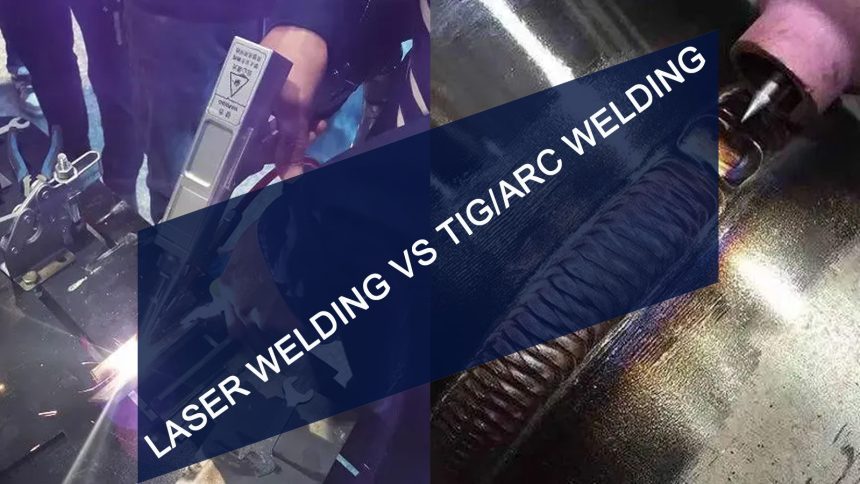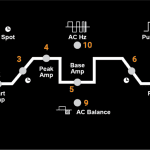Once upon a time, it might be hard to believe, but all welding was performed manually. During that era, when metal reached its molten state, skilled technicians would use a portable torch to join the separated parts. Although some applications still make use of this method, it has largely been replaced by modern welding techniques.
LASER WELDING VS TIG/ARC WELDING
Welding Town
Laser welding machines and ARC welders / TIG welders stand as two widely favored welding techniques. In order to aid you in making an informed decision, we will meticulously examine and contrast these two methods while delving into the inherent merits and drawbacks they offer.
WHAT IS ARC WELDING OR TIG WELDING?
In the realm of arc welding, a non-consumable tungsten electrode, commonly referred to as TIG welding, takes center stage to facilitate the welding process. Through this technique, the workpiece metal is skillfully heated with the electrode until it reaches its melting point, allowing the molten metal to be effectively deposited into the joint using the same electrode.
Arc welding boasts remarkable versatility, making it applicable to a wide array of materials, including cast iron, stainless steel, and aluminum. The welds produced by arc welders exhibit exceptional strength and superior quality. Furthermore, this welding method is notably safer since it generates no smoke or harmful fumes.
However, arc welding does present certain challenges that aspiring welders must master. Compared to other welding techniques, it demands a higher level of skill and proficiency. Additionally, specialized equipment is required, which could result in significant expenses if purchased or rented. Moreover, due to the intense heat output involved, there is a potential risk of burns if proper caution is not exercised.
WHAT IS LASER WELDING?
Laser welding utilizes the power of lasers to merge materials, accomplishing the melting and fusion of metal when a laser beam is precisely directed at the seam where two material pieces meet.
The remarkable precision and repeatability achieved through laser welding make it a preferred choice for precision welding applications. Moreover, it excels at joining materials that pose challenges for conventional welding, such as stainless steel or aluminum. Additionally, laser welding is well-suited for applications that demand stringent tolerances, as it effectively reduces thermal distortion in the welded components.
Despite its numerous advantages, laser welding does come with a few limitations. Firstly, it necessitates expensive equipment that may also be challenging to operate. Additionally, the process generates substantial heat, which can be potentially hazardous if proper precautions are not taken.
DIFFERENCES AND SIMILARITIES BETWEEN LASER WELDING AND TIG
The following are some of the main parallels and contrasts between laser welding and TIG welding:
| FEATURES | LASER WELDING | ARC/ TIG WELDING |
| Fusing Method | Uses intense laser beams to melt seams together. | Uses filler metal and heat from an electric arc to melt and glue the seams together |
| Oxygen Protect | The laser’s separate nozzle distributes carbon dioxide to the welding area. | An inert gas shield, usually argon, but occasionally helium. |
| Filler Substance | It is not necessary for laser welding. | Popular thin filler metals. |
| Bridging The Gap | A narrow fusion zone and a lack of filler metal cause poor gap bridging. | Wide fusion zone and using filler metal enable effective gap bridging. |
| Remaining Stress And Distortion | Low heat input per unit length produces low residual stress and distortion. | Excessive residual stress and deformation are caused by high heat input per unit length. |
| Typical Uses | Industrial applications. | Private or widespread applications. |
| Key Benefits | The ability to weld various thin and thick metals, along with accuracy and precision, makes it simple to handle challenging connections and produce strong, clean welds. | With less expensive equipment and more control over the welding process, materials with gaps or poor fit can be joined. |
| Principal Drawbacks | Costly initial investment and ongoing maintenance, unsuitable for reactive materials where cracks may form, and challenging to combine surfaces with gaps. | Requires a high level of skill and talent; heat transmission can cause distortion and weaker welds, making the joint more vulnerable to impurities. |
| Efficiency | High productivity and welding rates. | Low productivity and welding speeds. |
| Cracking Tendency | The development of brittle phases. | Solidification cracking is likely. |
| Cooling Speed | Rapid cooling; almost instantaneous material handling after the laser welding. | A slower rate of cooling |
| Effectiveness Overall | Produces spotless, superior welds on a variety of materials. | Produces clean, high-quality welds on a variety of materials. |
COMPARED TO ARC (TIG) WELDING, IS LASER WELDING BETTER?
Laser welding has emerged as a preferred choice for numerous production applications due to its advantages over conventional welding methods like TIG welding. One of the key benefits of laser welding is the production of welds with shorter heat-affected zones, leading to increased precision and reduced distortion in the final product.
The swiftness of laser welding compared to TIG welding can significantly contribute to expediting the manufacturing process.
Moreover, laser welding’s remarkable accuracy is attributed to its precise focus on the intended spot, minimizing the risk of damaging the surrounding area and enabling the welding of sensitive components without concern for harm.
Furthermore, laser welding offers the versatility to work with a wide range of materials, including metals, polymers, and even glass, whereas TIG welding is primarily limited to metals.
TIG welding also boasts rapid progress, resulting in shorter production times and reduced overall costs. Its cleanliness is enhanced as there is no need for filler materials or gas, making it a cleaner alternative to previous welding techniques.
In conclusion, the choice between laser welding and TIG welding depends on various factors, such as the materials involved, their thickness, desired weld strength, and aesthetic preferences. To make the most suitable decision, seeking guidance from experienced welders or metal fabricators who can assess your unique requirements and offer valuable advice based on their expertise is highly recommended.












